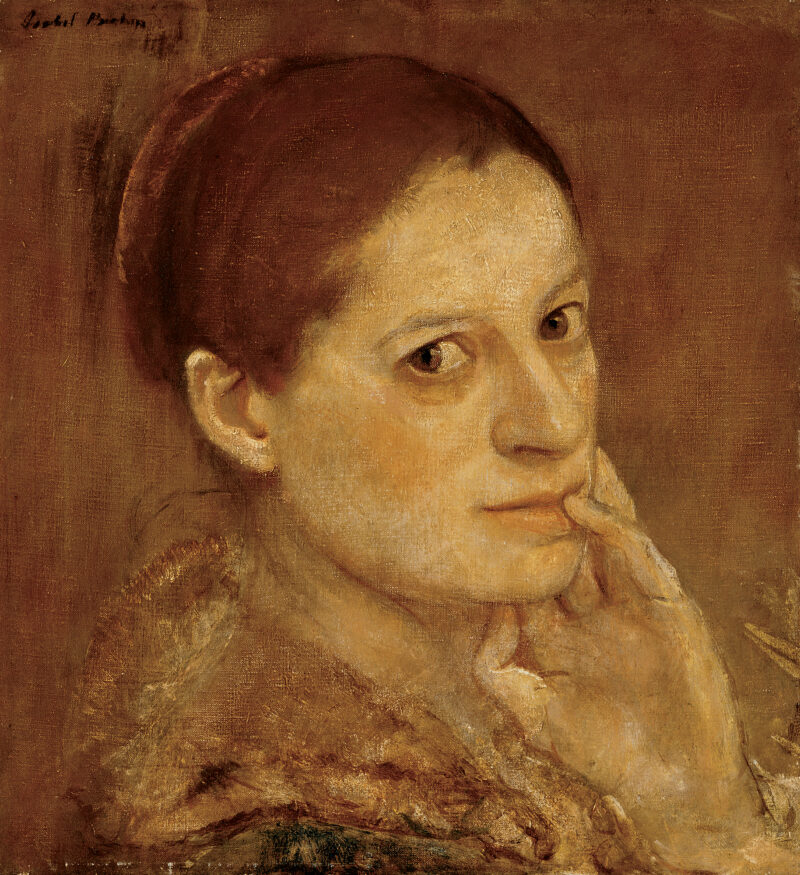
Self-Portrait
Bishop, Isabel
1927
Artwork Information
-
Title:
Self-Portrait
-
Artist:
Bishop, Isabel
-
Artist Bio:
American, 1902–1988
-
Date:
1927
-
Medium:
Oil on canvas
-
Dimensions:
14 1/8 x 13 inches
-
Credit Line:
Wichita Art Museum, Museum purchase, Friends of the Wichita Art Museum
-
Object Number:
1981.34
-
Display:
Not Currently on Display
About the Artwork
Isabel Bishop was one of America’s most admired contemporary artists. She was born in Cincinnati in 1902, spent her early years in Detroit, and while still a rather young girl in 1918, settled in New York City. There she studied at the Art Students League during the 1920s with the noted painter and teacher, Kenneth Hayes Miller, and worked closely with such artists as Reginald Marsh, Edward Laning, Guy Pène du Bois and many others whose studios were then concentrated in New York’s Union Square section. In 1933 she held her first solo exhibition at the prestigious Midtown Gallery, which continued to represent her until her death in February 1988.
From the beginning of her career Isabel Bishop proved herself to be a masterful draftsman and a keen observer of human life and of the manner in which human beings relate to one another in the everyday world of urban living. That keen power of observation is the force that has enabled her to penetrate so deeply into personality and discover and express qualities of universal humanness. What is so fascinating is that she could apply that rare capability to herself as well as to others, as is so evident in this engaging self-portrait executed more than 60 years ago in 1927 when she was only 25 years old and living in a loft on West 14th Street in lower Manhattan.
In this work, the subtle modeling and the delicate handling of flesh tones has enabled the artist to render her own distinctive physical features with care and exactness. But the success of the portrait as a work of art depends upon numerous factors other than physical likeness alone. Of particular interest is the fact that the soft focus realism which was to become so characteristic of Bishop’s work is already in evidence here, as for example in the treatment of the fur shoulder wrap which merges with the warm tones of the nondescript background, allowing the face alone to stand out prominently in high relief. Moreover, the head tilted slightly and gently turned to our left, partly faces forward so that our attention is grasped by the radiantly penetrating eyes. But perhaps the most compelling feature of this work is the thoughtful facial expression itself, emphasized by the expressive left hand drawn to her face with the little finger delicately touching her lips. This is indeed the image of a young and vitally creative person who with but the slightest glimmer of a smile on her face is in contemplative thought as she looks outward observing us and the world about her. And it is the clarity of vision, so convincingly suggested here in this very early work, that came to be the determinant of both the style and the content of Bishop’s paintings throughout her long and enormously successful career.